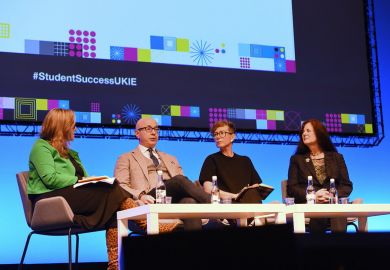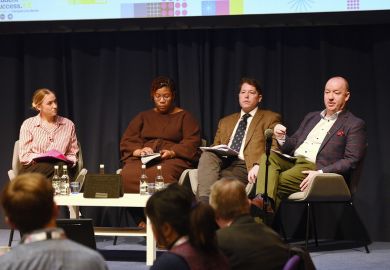Thanks to its location in the Tampa Bay Area, the public University of South Florida System is likely to find itself on the right side of economic and population shifts in the US. On both fronts, shrinking Rust Belt cities in the former industrial heartlands of the north east and Midwest are being outstripped by Sun Belt cities of the south and west.
And as hosts for this year’s Times Higher Education Young Universities Summit, held from 5 to 7 June, USF leaders believe that their recent record reveals much about the potential of the world’s newer universities.
Judy Genshaft, USF System president, opened the summit by telling the audience of university leaders that “young universities are so important. We are agile enough to meet our constituencies where they are; in the community, in urban settings and in the world, rather [than] observing from an ivory tower or from behind a wall.”
The USF was recently recognised by the state of Florida as one of its “pre-eminent” universities – which affords higher levels of funding – joining two much older universities located in smaller cities: the University of Florida (in Gainesville) and Florida State University (in the state capital of Tallahassee).
There are 3 million people living in the Tampa Bay Area and the metropolitan area was ranked as the 23rd fastest-growing city in the US by Forbes this year.
Tampa’s Democratic mayor, Bob Buckhorn, spoke at the THE summit gala dinner, saying that the city’s status as a “key emerging market” in the US was “largely due to the presence of the University of South Florida”.
Dr Genshaft, who took over at the USF in 2000 – the institution has grown from 37,000 to 50,000 students since then – told THE that in the past the university’s “global nature was non-existent…and now the whole worldwide view and experience is just infused everywhere” after a drive to increase international student recruitment and send students overseas.
Not only is it “transformational for students to learn about other cultures”, but “employers want to have a workforce that’s globally knowledgeable”, she added.
The USF has also rapidly grown its research profile, said Dr Genshaft, highlighting its record in applied fields such as studies on the Zika virus and diabetes.
“We’re so fortunate to be in an urban area, because that’s where the issues are,” she said. The USF is “making sure we’re the economic engine for the city and the surrounding areas”, she added.
The university measures its annual economic impact in the Tampa area at more than $4 billion (£3 billion).
Ralph Wilcox, the USF System provost and executive vice-president, said that the institution has a mission to achieve “tangible relevance”, by providing a “workforce pipeline” and through its research.
“The relevant role and impact that young universities find themselves able to make is very, very different to the role that perhaps more established brand institutions have made,” he told THE. “Because in the 21st century all too many of them [more established universities] don’t find themselves in relevant geographical locations. It’s as true here in the state of Florida as it is in the United Kingdom.”
Dr Wilcox, a British-born University of Exeter graduate, said that the cities of Florida – now the third-largest state in the US by population – are “where companies are moving. And, of course, companies will only move to locations where there is a ready availability of talent. One of our roles [is that] we’ve got to provide on the supply side.”
Dr Genshaft is on the board of governors on the Tampa Bay Partnership, a “CEO-driven regional advocacy organisation”, and is vice-chair of the Tampa Hillsborough Economic Development Corporation. For the former, the academic psychologist is co-chair of a special committee looking at workforce “demand and supply”; on the supply side it is looking at “elementary all the way through to higher ed schools, so we’re matching the needs of the economy”, she said.
The USF is creating a new building for its medical school in downtown Tampa (the main campus is to the north of the city), after the university was invited to be at the heart of a $3 billion regeneration programme for the waterfront area.
Dr Wilcox said that “given the socio-economic profile of students who gravitate towards the University of South Florida”, where 40 per cent of students receive federal Pell Grants that support poorer students, the USF is a “very strong advocate at the federal level” for funding these grants.
Do Donald Trump’s visa policies and anti-immigration rhetoric present a problem for a university seeking to build a global reach?
“We have to abide by our Florida laws as well as the United States’ laws,” said Dr Genshaft. “We keep working very hard to make sure the students have access to the university. There are some more challenges than we’ve had [in the past]. But this [being global] is part of who we are.”
john.morgan@timeshighereducation.com
POSTSCRIPT:
Print headline: Vital growth factors: youth and agility
Register to continue
Why register?
- Registration is free and only takes a moment
- Once registered, you can read 3 articles a month
- Sign up for our newsletter
Subscribe
Or subscribe for unlimited access to:
- Unlimited access to news, views, insights & reviews
- Digital editions
- Digital access to THE’s university and college rankings analysis
Already registered or a current subscriber?









